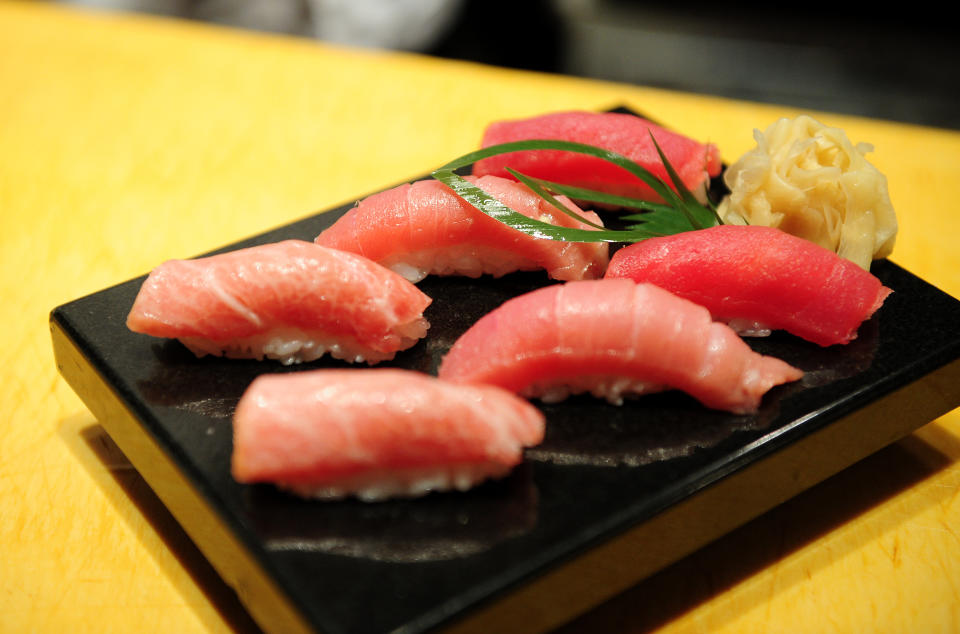Uh oh: The sushi fish you’re eating might not be the kind of fish you ordered
Are you a sushi fiend? New research shows that you might getting the wrong fish about half the time. At least in Los Angeles, where the study was conducted. But this could serve as a warning for sushi eaters everywhere.
A new research report published in this month’s Conservation Biology journal and conducted as a joint study between UCLA and Loyola Marymount University, sent researchers to 26 different sushi restaurants in L.A. over the course of three years (2012-2015).
They clipped pieces of the fish and stored them in a vial for later lab testing.
The DNA results proved that 47 percent of the sushi sampled was “mislabeled.”
#sushiloveforever #sushi Credit @austin_lifestyles
A photo posted by Sushi Love Forever (@sushiloveforever) on Jan 18, 2017 at 4:52am PST
Oddly, some varieties were more prone to fraud than others.
Tuna was usually tuna, while salmon was correctly labeled about nine times out of ten.
A photo posted by Marcos Piaia (@marcospiaia) on Jan 18, 2017 at 1:03pm PST
Halibut, however, was usually something else entirely. According to the report, of “43 orders of halibut and 32 orders of red snapper, DNA tests showed the researchers were always served a different kind of fish.”
In nine out of ten instances, the halibut was really flounder.
A photo posted by Bri (@bri2bree) on Jan 17, 2017 at 6:48pm PST
Paul Barber, a UCLA professor of ecology and a senior author of the study, told LAist that tuna and salmon were likely less often mislabeled due to their distinctive appearances.
“With snapper, however, it’s kind of a nondescript, white-fleshed fish, which describes most fish that are out there,” he said. Right, and if the fish is hidden in the folds of a sushi burrito, who knows?
In addition, researchers said they found similar mislabeling at high-end supermarkets. So, it’s possible the restaurants are purchasing the wrong fish without realizing it.
Barber told KPCC, “it’s hard to know where in the supply chain it begins.”
Fish and happiness for days #sushigrade #seafoodbestfood
A photo posted by Cristina Resczenski (@rezzydreams) on Jan 16, 2017 at 5:04pm PST
He also said that the mix-ups could be fairly honest. “There are some cases of legitimate mistaken identity,” Barber told LAist. But he also pointed out that “some of these cases stem from regulatory semantics.”
For example, the U.S. Food and Drug Administration is specific about what type of fish can be classified as red snapper, and that the classification differed from what Japan regards as a red snapper. Therefore, what you might be getting isn’t what U.S. would recognize as a snapper, but what would be considered legit in Japan.
But then, in some places red snapper was substituted with tilapia. “And there’s no way that can be accidental,” Barber said.
“It’s swapping out a high value fish for a lower value fish.”
A photo posted by
✈
(@mahardcorelady) on Jan 18, 2017 at 9:04am PST
Luckily, the mislabeling of fish may soon be on the decline, as the National Oceanic and Atmospheric Administration enacted the Seafood Import Monitoring Program on Monday. The initiative intends to establish “permitting, reporting and recordkeeping procedures relating to the importation of certain fish and fish products, identified as being at particular risk of illegal, unreported, and unregulated (IUU) fishing or seafood fraud.”
So, we won’t be quitting sushi anytime soon. But we might just stick to the distinctive-looking fish.

 Yahoo Finance
Yahoo Finance 
